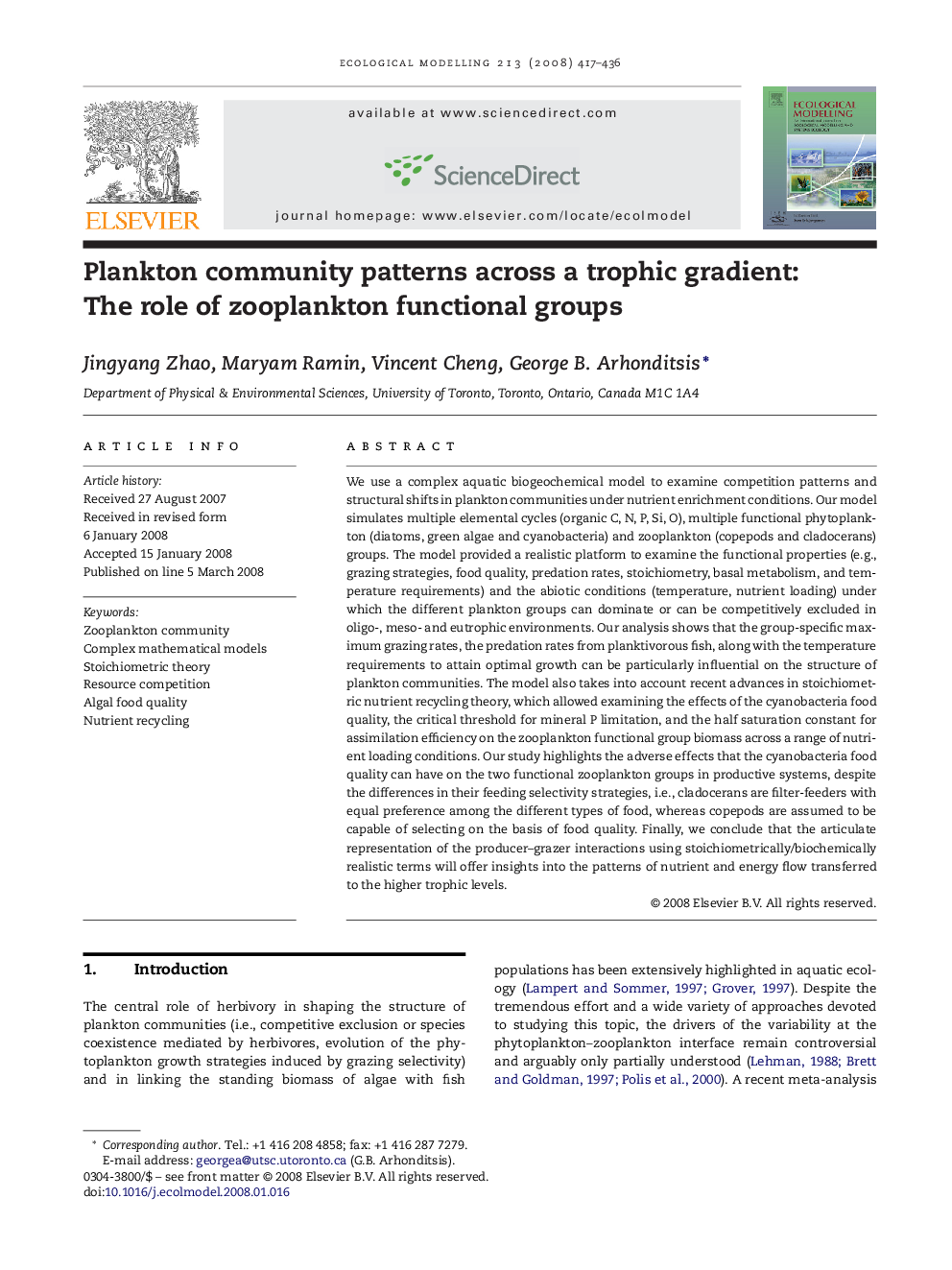| کد مقاله | کد نشریه | سال انتشار | مقاله انگلیسی | نسخه تمام متن |
|---|---|---|---|---|
| 4378218 | 1617534 | 2008 | 20 صفحه PDF | دانلود رایگان |

We use a complex aquatic biogeochemical model to examine competition patterns and structural shifts in plankton communities under nutrient enrichment conditions. Our model simulates multiple elemental cycles (organic C, N, P, Si, O), multiple functional phytoplankton (diatoms, green algae and cyanobacteria) and zooplankton (copepods and cladocerans) groups. The model provided a realistic platform to examine the functional properties (e.g., grazing strategies, food quality, predation rates, stoichiometry, basal metabolism, and temperature requirements) and the abiotic conditions (temperature, nutrient loading) under which the different plankton groups can dominate or can be competitively excluded in oligo-, meso- and eutrophic environments. Our analysis shows that the group-specific maximum grazing rates, the predation rates from planktivorous fish, along with the temperature requirements to attain optimal growth can be particularly influential on the structure of plankton communities. The model also takes into account recent advances in stoichiometric nutrient recycling theory, which allowed examining the effects of the cyanobacteria food quality, the critical threshold for mineral P limitation, and the half saturation constant for assimilation efficiency on the zooplankton functional group biomass across a range of nutrient loading conditions. Our study highlights the adverse effects that the cyanobacteria food quality can have on the two functional zooplankton groups in productive systems, despite the differences in their feeding selectivity strategies, i.e., cladocerans are filter-feeders with equal preference among the different types of food, whereas copepods are assumed to be capable of selecting on the basis of food quality. Finally, we conclude that the articulate representation of the producer–grazer interactions using stoichiometrically/biochemically realistic terms will offer insights into the patterns of nutrient and energy flow transferred to the higher trophic levels.
Journal: Ecological Modelling - Volume 213, Issues 3–4, 24 May 2008, Pages 417–436